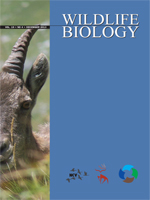Paul Krausman and Bruce Leopold clearly put a lot of thought and effort into the volume they describe as a collection of the “classic and fundamental papers that form the core of the science of wildlife management”. This book contains 42 papers on different subjects and is divided into four sections: Our philosophical roots; Animals, ecology and populations; Habitat; and Human dimensions. Each section contains a variable number of papers arranged in chronological order and each paper has some interesting introductory notes by Krausman and Leopold, followed by a useful list of related readings. The first section includes several papers by Aldo Leopold which help set the stage for the early years of wildlife conservation in North America. The second section contains 22 papers and presents work by some noted early ecologists including Charles Elton, Paul Errington and Lamont Cole. The habitat section has only seven papers, but they include work by Victor Shelford, Frederic Clemens and Paul Dalke. The final section addresses the relatively new field of human dimensions in wildlife conservation and includes four papers on human dimensions and biodiversity. It also contains a paper on guidelines for authorship which seems out of place.
The editors state that this book addresses the needs of wildlife academicians, professionals, students, high school science teachers and interested lay persons. If true, this volume would provide an incredibly valuable contribution to wildlife management and conservation. In their introduction, the editors extol the volume's virtues to university faculties and students; they also explain its possible relevance to high school science teachers and students, and they discuss its usefulness to the general public. In contrast, they do not mention the book's usefulness or appeal to wildlife professionals employed outside of a university setting despite making the claim that it addresses the needs of this group. In describing the book's potential appeal, it seems as if they have cast their net a bit too wide. The volume's greatest utility will likely be to university faculties and students; it will probably have limited appeal to wildlife professionals outside of this group. It also has a decidedly North American slant, although Elton was at Oxford and some papers from Australian biologists are included.
Krausman and Leopold indicate that the 42 papers contained in this volume were selected from a broader list of 120 or so which they believed were “classics in the field”. Considering that five of the 42 papers which they selected were published between 1991 and 2010 and six of the 42 were published in outlets other than peer-reviewed journals, the editors' use of the term ’classic’ may be somewhat of an overstatement. At least eight of the 42 papers address some aspect of mammal ecology or management; however, I could not find a single paper that focused largely on avian ecology or management (although two papers used birds as examples in dealing with ecological concepts). This oversight may represent the editors' view that no work on this subject could be considered ’classic’ or ’fundamental’, but this omission more likely simply represents the editors' interests and experience. The editors suggest that their selections were based in part on communication with other university wildlife faculties and also were influenced by the number of citations a paper had. Regardless, it appears as though the selection process was largely subjective and based on the editors' opinions. The volume's usefulness to management biologists will likely be limited because it lacks fundamental publications on harvest management and avian ecology and management. Nevertheless, this does not detract from the overall value of this collection of papers. The volume is a convenient reference of some classical work and a number of biologists may want to add it to their collection.





